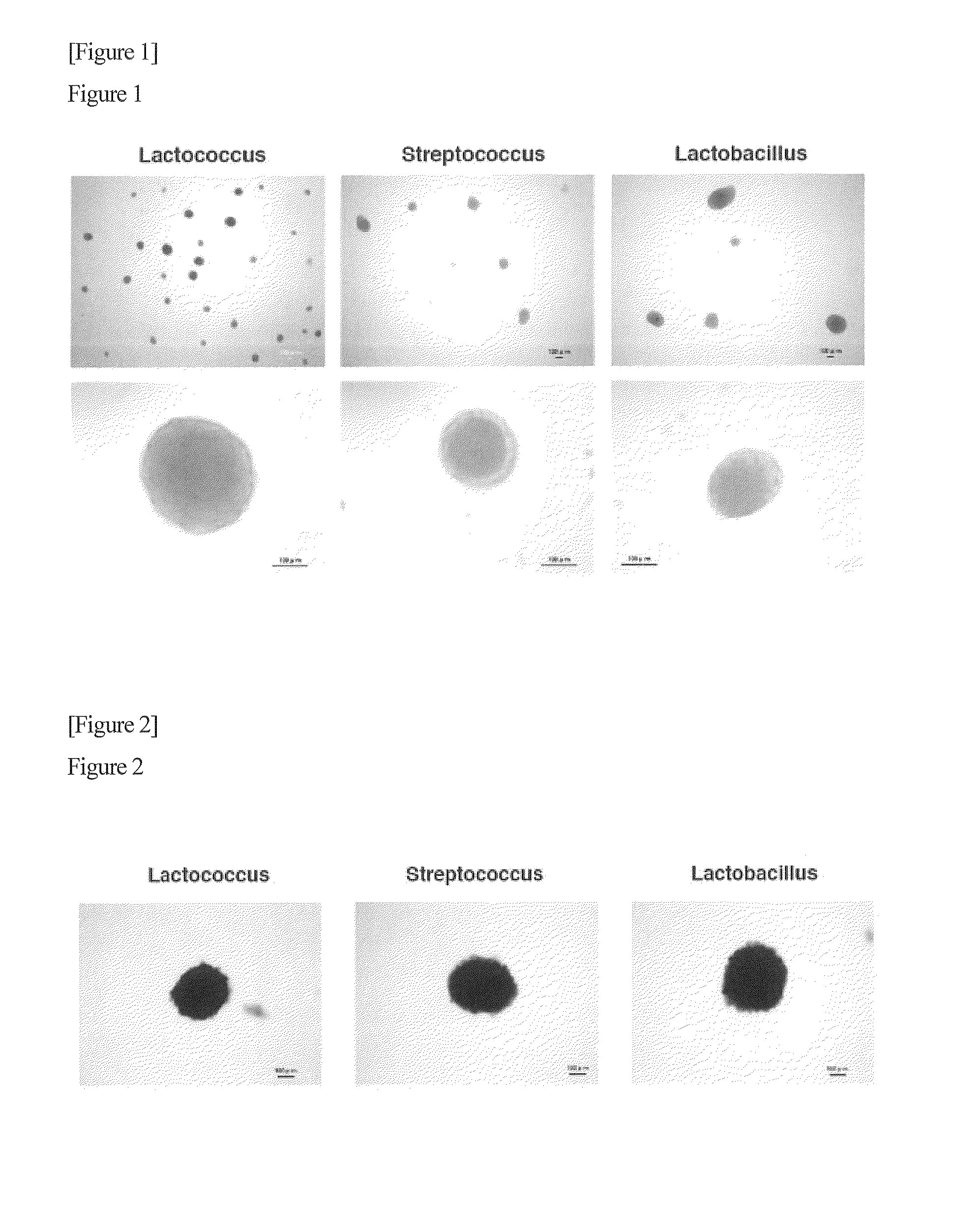Method for producing pluripotent cell using bacterium having fermentation ability
a technology of fermentation ability and pluripotent cells, which is applied in the field of producing pluripotent cells using bacteria having fermentation ability, can solve the problems of ethical concerns and cancer risk of cells remaining
- Summary
- Abstract
- Description
- Claims
- Application Information
AI Technical Summary
Benefits of technology
Problems solved by technology
Method used
Image
Examples
example 1
[0047]Human dermal fibroblasts (HDF cells) (Cell Applications, Inc., Cat No. 106-05a) were cultured in a fibroblast growth medium (Cell Applications, Inc.) in a 10-cm petri dish. The cells were washed with 10 ml of CMF (Ca2+ Mg2+-free buffer). A 0.25% trypsin solution (containing 1 mM EDTA) was added in an amount of 1 ml and allowed to spread across and throughout the dish. The cells were introduced into a CO2 incubator (37° C.) and allowed to stand therein for 5 minutes. A trypsin inhibitor solution (3 ml, Cell Applications, Inc.) was added to prepare a cell suspension, and the number of the cells was counted. Lactic acid bacteria (i.e., Lactococcus lactis subsp. Lactis (JCM20101), Streptococcus salivarius subsp. thermophilus (JCM20026), Lactobacillus sp. (JCM20061), or Lactobacillus acidophilus (JCM1021)) were introduced into a 6-well plate at 7×107 cells / well in advance, and the HDF cells were then added (5×105 cells / 2 ml). Lactic acid bacteria purchased from the Japan Collection...
example 2
[0049]HDF cells (5×105 cells / 2 ml) were infected with lactic acid bacteria (7×107 cells) (i.e., Lactococcus lactis subsp. Lactis (JCM20101), Streptococcus salivarius subsp. thermophilus (JCM20026), or Lactobacillus sp. (JCM20061)) in a 6-well plate, culture was conducted in an incubator at 34° C. in the presence of 5% CO2 for 8 days, the resulting cell masses were transferred to a 4-well plate, the plate was introduced into an alkaline phosphatase coloring solution (Roche), and color was allowed to develop at room temperature for 1 hour.
[0050]As a result, the cell masses turned purple, as shown in FIG. 2. This indicates that the HDF cells infected with lactic acid bacteria are pluripotent.
example 3
[0051]HDF cells (5×105 cells / 2 ml) were infected with lactic acid bacteria (7×107 cells) (i.e., Lactococcus lactis subsp. Lactis (JCM20101)) in a 6-well plate, culture was conducted in an incubator at 34° C. in the presence of 5% CO2 for 8 days, and the formed cell mass was fixed with 4% PFA at room temperature for 15 minutes, followed by staining thereof with a mouse anti-SSEA-4 antibody (MILLIPORE).
[0052]As a result, the cell mass was found to express the SSEA-4 antigen, which would be expressed specifically by pluripotent cells, as shown in FIG. 3.
PUM
| Property | Measurement | Unit |
|---|---|---|
| temperature | aaaaa | aaaaa |
| size | aaaaa | aaaaa |
| lactic acid | aaaaa | aaaaa |
Abstract
Description
Claims
Application Information
 Login to View More
Login to View More - R&D
- Intellectual Property
- Life Sciences
- Materials
- Tech Scout
- Unparalleled Data Quality
- Higher Quality Content
- 60% Fewer Hallucinations
Browse by: Latest US Patents, China's latest patents, Technical Efficacy Thesaurus, Application Domain, Technology Topic, Popular Technical Reports.
© 2025 PatSnap. All rights reserved.Legal|Privacy policy|Modern Slavery Act Transparency Statement|Sitemap|About US| Contact US: help@patsnap.com



